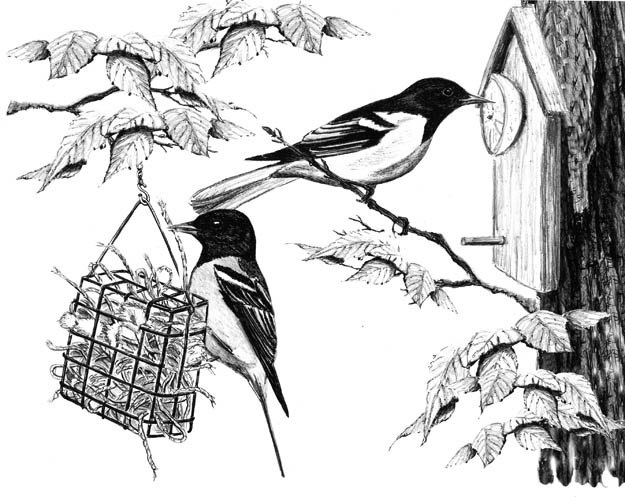
Dear Bird Folks,
Each May, for as far back as I can remember, our yard has been filled with orioles. This year we’ve seen very few. We have both oranges and jelly out for them, but so far no takers. Has something happened to them or are they just mad at us?
– Sidney, Barnstable, MA
Relax, Sidney,
Nothing has happened to the orioles and they aren’t mad at you. Don’t be so paranoid. The reason you aren’t seeing as many orioles at your feeders this year is because a meteorological miracle has taken place. This strange meteorological event is called “spring.” But this is not just any spring; I’m talking about spring on Cape Cod. Yes, you read that right. For the first time since the glaciers have receded this area is experiencing what the rest of the world experiences every year. Typically, as most of us know, we have winter, followed by four straight months of March, and then sometime in July summer begins. But this year, for some reason, April was pleasant and May has been even more pleasanter, and that has changed everything.
You aren’t alone with your “no orioles” complaint. I’m hearing it from a lot of customers. While I don’t have any scientific data on the reason for the lack of orioles, I do have a theory. Actually, the theory was put forth by one of my employees, who shall remain nameless because I want the credit for it. Unless, of course, the theory turns about to be wrong. Then I’ll quickly point my finger at the person who made the suggestion. Remember: take the credit and pass the blame.
Usually when the orioles arrive in these parts, the Cape is cold and damp, and most of the trees haven’t leafed out yet. But this year the trees “came out” early, two to three weeks earlier than usual. When the orioles arrived, they found two things waiting for them. The first was a nice cover of foliage; the second thing, however, was more significant. There, feeding on all of these early leaves were gazillions of little wormy caterpillars, especially winter moth larvae. Most of the time the orioles use our oranges, jelly or sugar water to hold them over until the bugs come out. This year the bugs were waiting for them when they arrived and they didn’t need our handouts. Will the orioles ever come to our feeders this year? Probably, but that may not happen until the worm supply is exhausted, or until this year’s batch of baby orioles start flying around looking for food.
This brings us to a subject that many oriole fans don’t like to think about. In recent years, offering birds grape jelly has become super popular. In some cases it’s become the birds’ food of choice. As is the case with many humans, orioles like anything sweet and the sweeter the better. Grape jelly is very sweet, maybe too sweet. It has a higher concentration of sugar than oranges or the sugar water mixture we put in our feeders. There’s a concern that the birds are ingesting too much of a good thing. And what is worse, the adults often feed globs of jelly to their babies. That’s bad. Our good intentions could cause young orioles to have unintended health problems, not to mention astronomical dental bills.
My suggestion is to use jelly in May when the orioles first arrive. It will give them the boost of energy they need after their long migration. However, it’s been suggested that we discontinue using jelly when the babies hatch in June and early July. Also, use “low sugar” jelly, but not anything with artificial sweetener in it. (Even birds hate that crap) And most importantly, offer jelly in very small amounts. It’s critical that we do all we can to prevent the birds from getting the sticky jelly on their feathers. Each summer wildlife rehabilitators have to clean scores of helpless orioles that end up with sticky and matted feathers.
If orioles aren’t coming to your feeder, there is something you can offer them that they still need – material for their nests. As most of us know, orioles build elaborate hanging nests that look like a cross between a sock and a big nose warmer. The female is always looking for material because she is the one that does all the work. (The male is usually close by though, watching for danger and to tell her when she’s not doing it right.) Major components of an oriole’s nest are strips of fiber from milkweed or dogbane. I don’t know about your yard but my yard’s supply of dogbane isn’t what it once was. To offset this shortage, I put out lots of twelve-inch long pieces of yarn or string. A female oriole is attracted to string like Tiger Woods is attracted to super models. And even though she only takes one piece at a time she’ll have the nest completed in about a week. Her work is always finished on time and always under budget, which is amazing for around here.
I wouldn’t worry about the orioles, Sid. Judging from all the singing I’m hearing, there are quite a few around. I’d put out some string and save the jelly for your toast. Just don’t put jelly on dogbane. It doesn’t taste as good as it sounds.